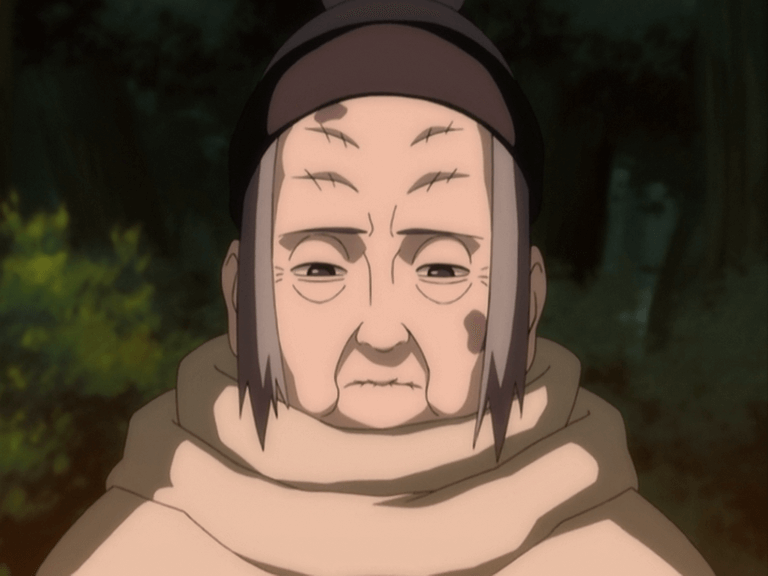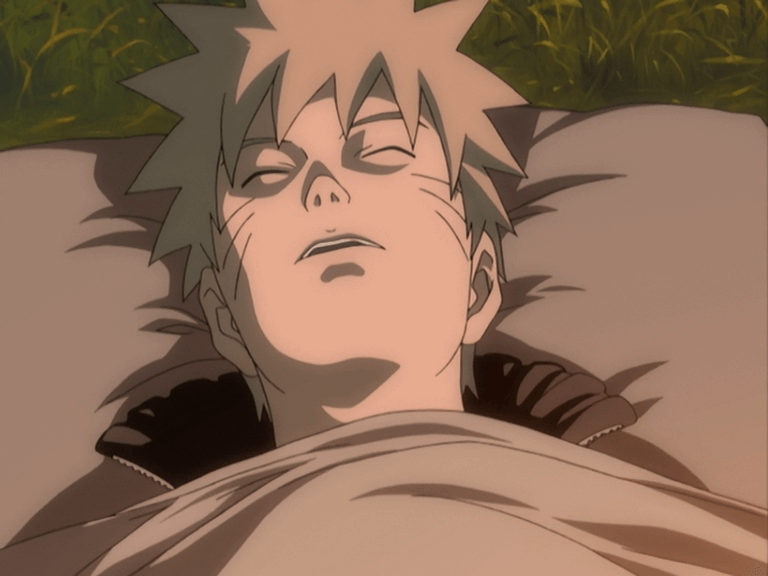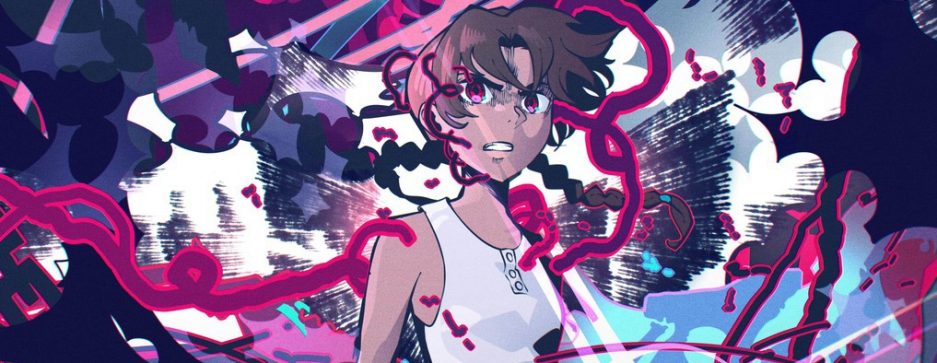Part 2 | Part 3 | Part 4 | Part 5
Re: Boruto: Naruto the Movie (2015)
Interviewer: So you really didn’t check on the storyboard at all?
Kishimoto: Yes, not even a single glance. I wrote the script with extreme detail and prior to all of this I watched Yamashita’s episodes for the anime over and over again- no matter the storyboard, or anything else, everything was flawless. I felt that if I were to intervene in any way it would just make things complicated, so I left everything to [Yamashita]. I believed that was the way I could best benefit this project’s completion.
Yamashita: Thank you Kishimoto-sensei for believing in me so much.
I chose the previous quote to lead this piece specifically because it centers on Boruto: Naruto the Movie. Directed by Hiroyuki Yamashita and airing in August of 2015, it is the most triumphant production effort of a franchise with more than its fair share to speak of, while at the same time, uniquely marred by the anime industry’s systemic exploitation of its most passionate artists. To understand how such a dramatic claim can be made, it is essential to first understand who Hiroyuki Yamashita the artist is. His contributions to the NARUTO series are unlike anything else found within the industry – in terms of sheer volume, quality of output, lasting influence, and much more. Adequately commemorating his career is no small task, but one well worth the effort.
To that end, I opted to use chronological order, though it’s worth noting that aside from the somewhat arbitrarily designed section headers, episodes and movie production cycles can span many months, which means airing first doesn’t necessarily mean it was worked on first, though it often does. It also needs to be said my objective with this piece is not to lay out an exhaustive list of animation produced by Hiroyuki Yamashita. Everything he has been involved with has been carefully and closely documented on sakugabooru, so to comb through each one is a pointless exercise. Instead, the landmarks of his career are the focus, and how they relate not just to NARUTO as a series, but their role in his growth as one of anime’s most special artists. It is the latter where I rest my hope that this might be a worthwhile read even for those with no interest or experience with NARUTO. Without further ado, this is my attempt to publish the career of the man who would shape the franchise.
Early Career (2004 – 2008):
For the uninitiated, the Chuunin exam fight between Rock Lee and Gaara is unquestionably among the most notorious of the series. It takes only a quick internet search to find countless parodies, AMV’s, and even mathematical analysis, spawned from the moment where Lee sheepishly discards his several ton leg weights, much to the dismay of everyone in the audience. Its staying power has been remarkable, and to a high school senior-aged Hiroyuki Yamashita, the manga version of this event marked one of his first memories with the franchise. Originally interested in becoming a background artist after seeing the astonishing work of Studio Ghibli’s Princess Mononoke, it wasn’t until the time of his vocational school training a few years later that the earliest offerings of NARUTO legends Toshiyuki Tsuru and Atsushi Wakabayashi caught his eye, and like they did for so many others, inspired him to walk the path of the animator.
In pursuit of this goal, Yamashita would join Studio A.I.C. as an “inbetween” (douga 動画) artist – the most common starting position of new animators in Japan. Don’t let that assessment fool you; however, the role of a douga artist is essential in the production line, and not a single episode can exist without them. As a douga artist, his job was to carefully trace the drawings of more experienced, key frame animators, in addition to drawing the breakdowns of the movement which exist between the key frames. This creates the consistent and solid look found in the lines throughout an anime. However, the tragically low remuneration rates, general disrespect the role receives from seniors, and lack of autonomy over one’s work leads to a high turnover rate, with most individuals either quitting, or surviving long enough to be promoted to a key animator – a goal which Yamashita eventually did achieve on Solty Rei (2005), but not before leading his douga department as a douga kensa (動画検査). A douga kensa is essentially a douga supervisor. All the inbetweens of an episode pass through this role, with corrections or retakes issued if necessary.
Despite my best efforts, his key animation output during his time at Studio A.I.C. is without any discernible traits, which is quite surprising when you consider that upon finding his way to Studio Pierrot and debuting on the seventeenth episode of Naruto Shippuuden in 2007, Hiroyuki Yamashita had already displayed an unparalleled grasp of Masashi Kishimoto’s, and by extension, character designer Hirofumi Suzuki’s style. The near instant familiarity with the designs suggests his time as a fan of the series was not spent merely watching passively, rather likely already several sketchbooks deep in fanart.



It was then Masaharu Watanabe, likely known to those unfamiliar with NARUTO for his adaptation of the popular light novel Re:Zero – Starting Life in another World, that most closely observed Yamashita’s early growth. While working on Naruto under the pen-name Gorou Sessha, the potent sense of volume and depth Watanabe displayed from his position as an animation director, honed through his upbringing at Kyoto Animation, would associate well with Yamashita’s attempts to channel the manga. Together they spearheaded the strongest team in the production rotation, and for the first three years of Shippuuden’s run time, held the majority of animation highlights between them.
While there are promising hints of Yamashita’s distinct animation timing developing earlier, it truly arrives for the first time in this critical scene from episode #51 – the reunion with Sasuke.
It is emblematic in the sense that Yamashita, for the first time, takes Kishimoto’s panels and elevates them through the sharp expressions and snappy timing that would become his main transformative tool. On the topic of Kishimoto, Yamashita cites his manga designs as the most comfortable to work with, in a 6:2:2 ratio, with the other two being character designers Tetsuya Nishio and Hirofumi Suzuki.
Returning to Sakura’s dramatic outburst, the blur seen here is also rather interesting. I wouldn’t be surprised if either passively or actively, the aforementioned franchise ace director, Toshiyuki Tsuru, had some influence, as its specific application is exactly like we find in his countless openings and action episodes. It’s a technique born of the early digital era, with the potential to go a long way when used proficiently. As a pioneer of said era, very few could contend with Tsuru’s expertise in integrating digital techniques with 2D animation – all of his episodes and openings feature them prominently.
Lending support to this theory is the fact that by this point, Yamashita had worked with Tsuru on NARUTO twice already: the Distance and the soon-to-air Blue Bird openings, in which he handled main action parts on both. The latter would even include encountering his idol and soon to be mentor, Norio Matsumoto, for the first time.
When it comes to the relationship of mentor and mentee, nobody can deny that the two hugely influential figures of Toshiyuki Tsuru and Norio Matsumoto presided over Yamashita at this time. However, without much first-hand testimony to base our claims off of, it’s difficult to say exactly how much they steered his growth as an artist. Stylistically, I would argue Yamashita had already developed most of his animation skillset on his own – with his earlier cuts on #51 serving as evidence enough of that. Instead, there is a significant case to be made for their intangible impact, instilling in Yamashita the high level of professionalism and work-ethic which, in retrospect, we can say are paramount to his career.
The Golden Age of Key Animation (2008 – 2010):
If the aforementioned openings were where Hiroyuki Yamashita caught the eye of his seniors, it was on #85 that he cemented his place. An episode directed by Toshiyuki Tsuru, and with animation intimately supervised by Hirofumi Suzuki, Yamashita was charged with an approximate seventy cuts, most of which contained highly involved action. For context, healthy TV anime episodes feature 300 cuts on average, though considering the director and amount of action, #85 sits leagues above at around 450 cuts instead.
Surrounded by a host of esteemed animation veterans, including a rare appearance by Tetsuya Nishio, the production of this episode is the event that most greatly spurred Yamashita’s growth. He has credited his time observing the duo of Tsuru and Suzuki while they worked as a great influence. Though, I would also imagine having Norio Matsumoto look on with interest is as great a motivator an animator could have – doubly so when that same individual’s artistry happened to be the reason you pursued your career in the first place. Ultimately, Yamashita delivered in a decisive moment, and perhaps most impressively, managed this feat without skipping his regularly scheduled turns in the production rotation – appearing again no worse for wear only three episodes later.
The 3rd Shippuuden Movie’s production would wisely coincide with a lengthy filler-arc on the TV-side, and serve as an important interlude before this adaptation would arrive at some of the most anticipated content of Masashi Kishimoto’s manga. For the next year, if there was a pivotal moment to be had in the anime, Yamashita was there. Defying conventional long-running series rotation behavior, he genuinely went out of his way to work on as many episodes as possible, starting with Kakashi’s backstory in #120, Toshiyuki Tsuru’s #123, Akitoshi Yokoyama’s guest appearance on #131, and several more. Though like any self-respecting performer, Yamashita saved the best for last, collaborating with Masaharu Watanabe for one final time on #143 and delivering work so technically complex that it’s one of his best-known sequences to this day.
Yamashita combined everything in his arsenal to convincingly animate swordsmanship, in which one combatant wields a ridiculous eight swords simultaneously. As an adaptive work, this is perhaps as uncompromising as the NARUTO series gets, since we can only imagine the number of corners that would need to be cut in just about anyone else’s hands. Instead, Killer B’s onslaught is brought to us by way of Yamashita’s emphatic timing, which, when paired with the large spaces he designed between subsequent drawings, asks the viewer to subconsciously fill in the gaps, and thus, remain engaged with the action. Anyone familiar with anime is aware of its tendency to thrive in a limited environment, and while Sasuke’s duel with Killer B is surely anything but limited, the principle behind using relatively fewer drawings to portray a grander effect is the reason this scene, and Hiroyuki Yamashita’s animation at large, is so engaging.
There are even layers of significant Naruto production history to speak of, as Chengxi Huang, to whom the Yamashita inspiration is no secret, has pointed toward this scene as one of his primary motivators in beginning his career as an animator in Japan. Coming full circle, Yamashita’s output on NARUTO at this time became a beacon for aspiring artists – allowing for moments like this one just eight years later, where Huang would attempt to channel the very same smeary, triangular-sword magic.
Unfortunately, like any golden age, it had to come to an end at some point, and it was now time for the regularly scheduled 4th Shippuden Movie. As one would expect, Yamashita’s role this time was larger than ever, handling four major scenes on top of the promotional teaser. Ordinarily this would have been business as usual, except this time we curiously find the habitual filler arc only eight episodes long, when they had been previously designed to coincide with the entire production cycle of the movies, so as to not leave important manga content without key staff. Whether this was mandated by Shueisha in an act of greed, or just an unlucky coincidence, nobody can say. However, the result is that the highly anticipated Pain Arc would find itself without its two animation aces in Masaharu Watanabe, and naturally, Hiroyuki Yamashita…
